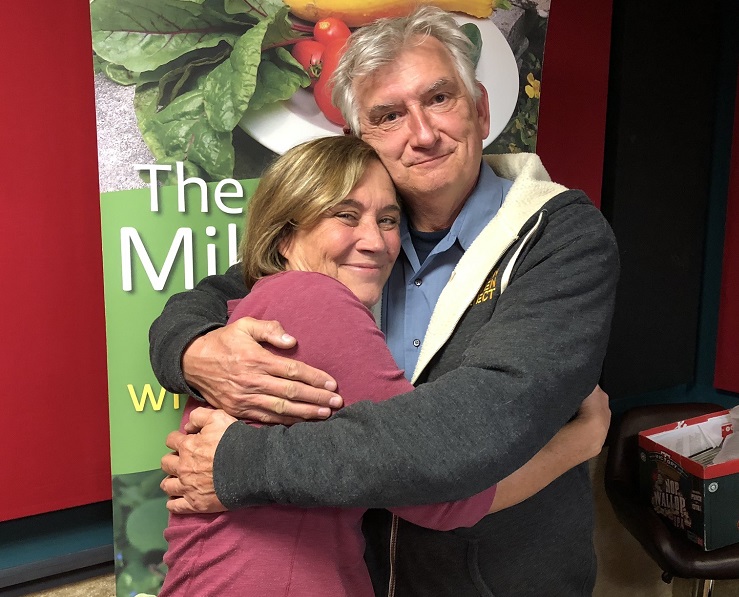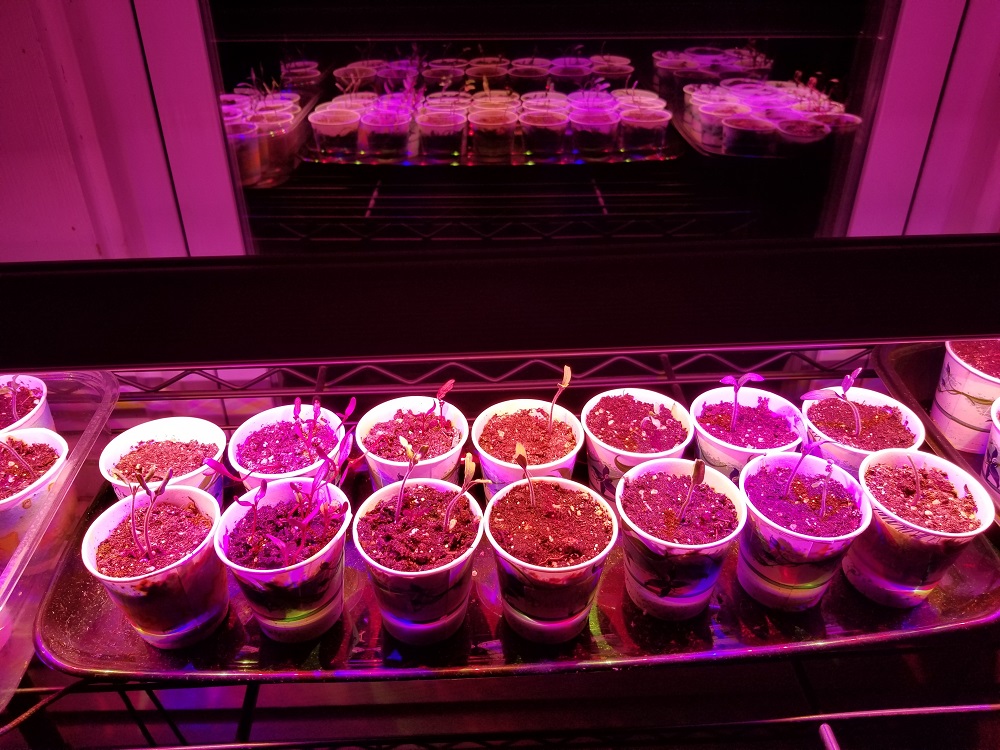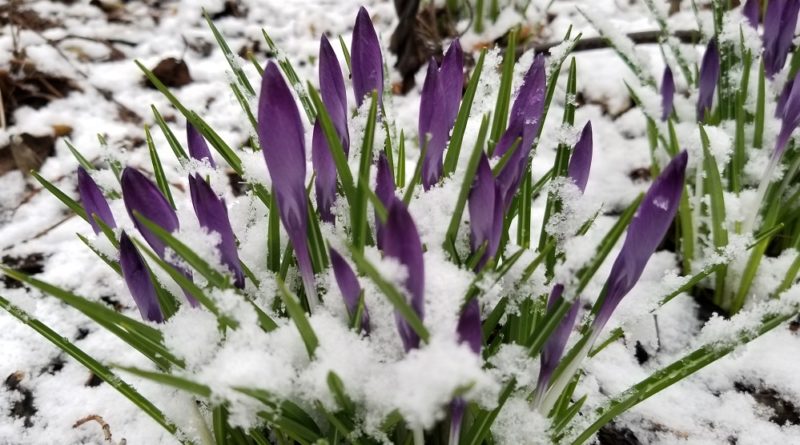Spring Is Still Scheduled–Melinda Myers Says So
Podcast: Play in new window | Download (Duration: 1:31:47 — 41.5MB)
Subscribe: Apple Podcasts | Spotify | Android | iHeartRadio | Podchaser | Email | TuneIn | RSS | More
(March 29, 2020) I don’t know about you, but today is Day 17 of the self-imposed lock down in our house. The good news is that if we don’t have symptoms by now, we probably haven’t contracted COVID-19. The bad news is that there’s not much likelihood that life will return to normal any time soon. The mixed news is that spring is still scheduled. In fact, it has already arrived, though I don’t know if I’m ready for it.
Do you know you can skip to specific interviews? Click below.
7:22 Melinda Myers
37:48 BJ Miller from Happy Leaf LED
56:00 Lisa Haderlein from The 5,000 Acre Challenge
1:12:42 Meteorologist Rick DiMaio

But if garden expert Melinda Myers is in the house (via Zoom), I can relax. She is a regular guest on The Mike Nowak Show with Peggy Malecki, mainly because she’s wicked smart and really nice. In case you don’t know, Melinda Myers is a nationally known gardening expert, TV/radio host, author & columnist. Her more than 20 gardening books include Can’t Miss Small Space Gardening and Midwest Gardener’s Handbook. She hosts the nationally-syndicated “Melinda’s Garden Moment” program airing on over 115 TV and radio stations throughout the U.S. Melinda also hosts the internationally distributed Great Courses “How to Grow Anything” DVD series, including the latest Food Gardening for Everyone DVD set.
Today, she will help all of us house-bound gardeners get ready for spring by explaining how to restore your landscape after winter. As I stated earlier, regardless of pandemics, spring is still scheduled. At least last time I checked. As it so happens, the April edition of Natural Awakenings Chicago magazine will feature an article on this subject by Melinda. And since I have an inside connection to the mag, here are some tips from that story.
This season, winter arrived at Halloween with snow, ice and cold temperatures. Many plants were still holding onto their green leaves when those first few snowstorms arrived. Wait until plants begin to grow to evaluate the impact of this early cold snap. Some plants may survive unscathed, others suffer a few dead branches and some new plantings and tender plants may need to be replaced. Be patient, as it can take a bit longer for stressed plants to recover.
Prune off any broken or damaged branches. Make cuts above a healthy, outward-facing bud where one branch joins another or the main trunk. Then, shape plants as needed. Wait to prune spring-flowering shrubs like lilacs and forsythias until after their spring floral display. Summer-blooming plants like Japanese spireas and Annabelle hydrangeas can be pruned before growth begins in spring. Remove and compost any leaves and twigs that may have accumulated on the lawn. Use a leaf rake to speed drying of the grass and reduce the risk of snow mold.
Okay, that’s all you get. You’ll have to pick up a copy of Natural Awakenings or listen to today’s show to get the rest.
Giving seedlings a jump start with Happy Leaf LED grow lights
As we said, spring is still scheduled, so have you started your seedlings yet? It’s not too late, especially if you have a Happy Leaf LED grow light in your gardening arsenal. In full disclosure, they are a sponsor of our show. But here’s another disclosure–Peggy and I love their lights and use them on our own plants. In fact, each of us has a crop of seedlings going right now. Check out the photo below. That’s in my house.
 B.J. Miller joins us on the show this morning to help guide you in picking the perfect grow light. She is a horticulture consultant with Happy Leaf and also works at City Grange in Chicago. Her jobs in the horticulture industry in the past 20 years include wholesale nursery grower, greenhouse and gardens manager, and production supervisor at a large hydroponic baby greens producer. She earned her B.S. from Purdue University in Horticultural Production and Marketing.
B.J. Miller joins us on the show this morning to help guide you in picking the perfect grow light. She is a horticulture consultant with Happy Leaf and also works at City Grange in Chicago. Her jobs in the horticulture industry in the past 20 years include wholesale nursery grower, greenhouse and gardens manager, and production supervisor at a large hydroponic baby greens producer. She earned her B.S. from Purdue University in Horticultural Production and Marketing.
Happy Leaf has a seed-starting page. As they write on that page,
You will see better germination and produce sturdier and healthier seedlings than you would with many other types of grow lights.
Our wavelength-specific lights use the highest quality LEDs on the market. Unlike most other grow lights, Happy Leaf LED lights can be used for the full life-cycle of your plants, from seed starting and beyond.
There’s also some great information from B.J.
When should you start your seeds? Follow the directions on the seed packet because some seeds take longer than others. For example, it is usually recommended that peppers are started 7-8 weeks before you want to plant them whereas broccoli will only need 3-4 weeks. These are good guidelines to follow. I will tell you that when I converted from fluorescent lights to Happy Leaf lights, I was able to reduce the number of days it took to get my plants ready for the garden. In any case, be careful not to get over-excited to get your seeds startedtoo early, resulting in plants that are ready to be planted in your garden much too early in the season.
There’s lots more to found at HappyLeafLED.com, including which size light is best for you. B.J. Miller tells us more about that on today’s show. One thing you might want to consider, though, is that there is a rush on seeds right now.
“Never seen anything like this in our life,” Gettle said via email. “Unbelievable volume of orders, many items have sold out. We are using next few days to regroup and try to get on top of the volume of things we got to catch up on.”
So, remember that spring is still scheduled, and if you haven’t ordered your seeds yet, you might find yourself waiting for that shipment.
The 5,000 Acre Challenge
If you heard our conversation with author Doug Tallamy back in February (just before the world got crazy), you know how important oak trees are. They are one of the “keystone species” that he describes in his new book, Nature’s Best Hope: A New Approach to Conservation That Starts in Your Yard. He says that about 5 percent of our native species produce about 75 percent of the food for neighboring fauna.
That’s just one of the reasons The Land Conservancy of McHenry County (TLC) is launching the 5,000 Acre Challenge. Their goal?
to protect one of the region’s most unique assets: oak woods. The 5,000 Acre Challenge will forge partnerships with private landowners, who now own 85% of the county’s remaining oaks. TLC believes meeting the 5,000 Acre Challenge is crucial to protect the environment and character of McHenry County.
TLC notes that it, along with private citizens, state and county agencies, have protected or managed 3,784 acres of oak woods in McHenry County. Now they want to make it 5,000.
“McHenry County is known for its natural landscape and we have some incredibly valuable oak woods remaining, but the county has lost more than 120,000 acres of oaks since it was first settled,” said Lisa Haderlein, Executive Director of the Land Conservancy of McHenry County. “We need a collective effort to protect what remains and reverse the decline. That’s why we’re launching the 5,000 Acre Challenge.”
Oak woods and savannas are one of the most endangered types of habitat on the planet. With roughly 15,000 acres of oaks remaining, McHenry County is home to a priceless natural resource. Oak woods improve air and water quality and support the survival of hundreds of native plant and animal species in the region. Without careful management, pressure from invasive plants and human development could quickly wipe out the county’s oak woods.
It’s good to know that even in the depths of a pandemic, spring is still scheduled and smart citizens are looking to protect the future of our natural areas–even if they’re in backyards. Lisa Haderlein joins us on the program this morning.


